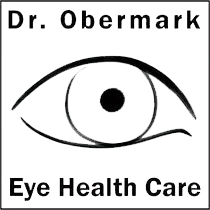Understanding Farsightedness

Farsightedness, or hyperopia, is a common refractive error that affects how the eye focuses light. If you're farsighted in Poplar Bluff MO and Sikeston MO, you may see distant objects clearly, but have trouble focusing on things up close—like reading a book or viewing your phone screen. However, not all cases are the same. While some individuals experience only mild difficulty, others may notice blurred vision at all distances. In many young people, the condition can go unnoticed due to the eyes' ability to adjust and compensate.
Hyperopia is not classified as a disease. Rather, it’s a focusing condition that results from the shape of the eye. Fortunately, it is easily diagnosed and treatable with the right vision care.
What Causes Hyperopia?
To understand hyperopia, it helps to know how your eye processes light. When light enters the eye, it passes through the cornea and lens. These structures bend (or refract) the light so it lands directly on the retina—the thin, light-sensitive layer at the back of the eye. The retina then sends signals to the brain to create a clear visual image.
In a farsighted eye, the refractive system doesn’t focus light correctly. Instead of landing on the retina, light is focused behind it. This typically occurs when the eyeball is shorter than average or when the cornea has a flatter shape than normal. As a result, nearby objects may appear blurred, while distant objects remain relatively clear.
Genetics is a major factor in the development of hyperopia. If one or both parents are farsighted, their children are more likely to inherit the condition. That said, anyone can develop farsightedness, even without a family history.
Interestingly, many infants are born farsighted. However, their eyes are still growing and are often able to compensate for the imbalance. As children grow, their eyes usually lengthen, which can naturally correct mild farsightedness. In some cases, however, the condition persists and may require correction.
Symptoms of Farsightedness
Hyperopia can present in different ways depending on the severity and age of the individual. Some common signs and symptoms include:
- Blurry vision when reading or doing close-up work
- Eye strain or fatigue after extended near tasks
- Frequent squinting to bring close objects into focus
- Headaches, especially after reading or screen time
- Difficulty concentrating on nearby objects
- Burning or aching sensation in the eyes
Children may not be able to articulate their symptoms, so it's especially important for parents to monitor for signs like poor reading performance, eye rubbing, or avoidance of near tasks.
Diagnosing Farsightedness
Hyperopia is usually detected during a routine eye examination. Eye doctors use several tools and methods to assess how well your eyes focus and to determine if a refractive error is present.
- Visual Acuity Testing: Measures how clearly you can see letters or symbols at various distances.
- Refraction Assessment: Using a phoropter, your optometrist places different lenses in front of your eyes and asks which provides the clearest vision.
- Retinoscopy: Especially useful for young children or non-verbal patients, this method uses a light to observe how it reflects off the retina, helping to estimate refractive error.
Early diagnosis is important—especially for children—since untreated hyperopia can lead to vision problems such as amblyopia (lazy eye) or difficulties in school.
Treatment Options for Farsightedness
Managing hyperopia typically involves vision correction to help light focus directly on the retina. The right option depends on your age, prescription strength, eye health, and lifestyle.
Eyeglasses
The most common solution, eyeglasses use convex lenses to correct the way light is focused, allowing for clear near and distance vision. Glasses can be easily updated as your prescription changes.Contact Lenses
Contact lenses offer a wider field of vision and may be preferable for those who play sports or prefer not to wear glasses. Like glasses, they correct the refractive error so light focuses properly on the retina.Refractive Surgery
For adults seeking a more permanent solution, several surgical options are available:
- LASIK: Uses a laser to reshape the cornea, allowing light to focus correctly. LASIK is typically most effective for mild to moderate hyperopia.
- Refractive Lens Exchange (RLE): In this procedure, the natural lens is replaced with an artificial intraocular lens (IOL). RLE is often used for more severe cases or when LASIK is not an option.
Before deciding on surgery, your eye care provider at Dr. Obermark Eye Health Care will thoroughly evaluate your eye health and determine if you're a good candidate.
Importance of Ongoing Eye Care
While some children may outgrow mild farsightedness, regular eye exams remain essential. Left uncorrected, hyperopia can affect academic performance, daily activities, and long-term vision health. In children, untreated farsightedness can contribute to developmental delays or eye conditions like strabismus (crossed eyes).
Adults should also monitor changes in vision over time. Farsightedness can become more noticeable with age, particularly after the age of 40, when the eye’s ability to focus on near objects naturally declines (a condition called presbyopia).
Choosing the Best Correction at Dr. Obermark Eye Health Care
Your treatment should align with your daily routine, vision goals, and long-term needs. Whether you prefer glasses, contact lenses, or are exploring surgical correction, your optometrist will help you choose the best solution for your lifestyle.
There are no exercises, supplements, or medications that can reverse hyperopia. However, with the right care plan, you can enjoy crisp, comfortable vision and protect your eye health well into the future.
Schedule a comprehensive eye exam in Poplar Bluff MO and Sikeston MO today to explore your options and get the clarity you deserve.



